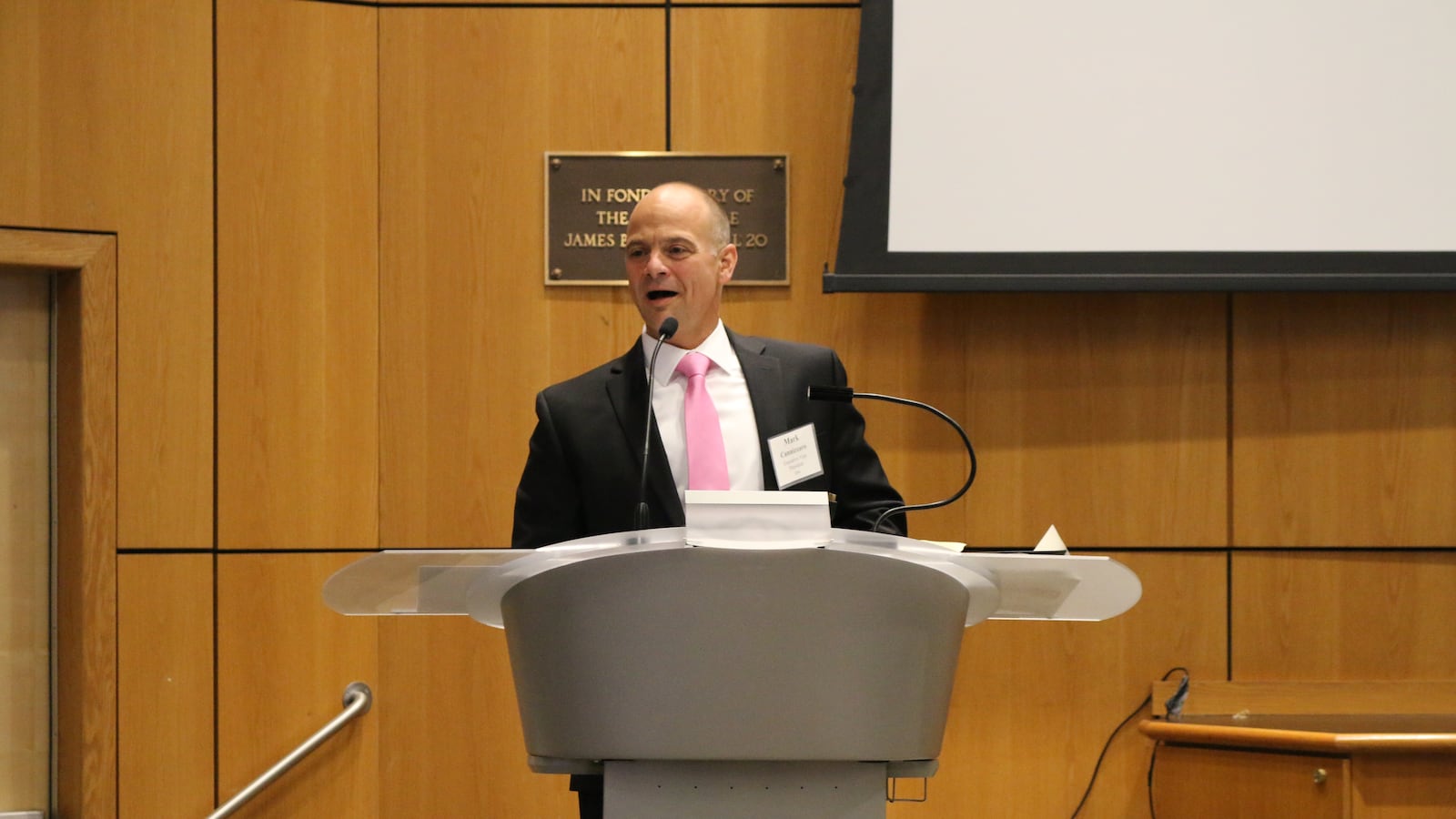Paid parental leave, salary bumps for leaders in hard-to-staff schools, and fewer off-site meetings were among new provisions in the tentative contract the principals union and the de Blasio administration announced on Thursday.
Despite the union’s efforts, the tentative agreement did not, however, bring the salaries of elementary school and middle school principals up to their high school counterparts — though principals of lower grades were awarded extra pay. It was the first time the union won such a dedicated boost with the goal of eventually closing the wage gap.
“Hopefully, sooner or later the city will realize that every principal has a difficult job,” said Mark Cannizzaro, president of the Council of Schools Supervisors & Administrators, the principals union known informally as the CSA. “If you think about the tremendous responsibility of an elementary school principal and leader: children have to learn to read, and there’s the safety factor of taking care of babies.”
Elementary and middle school principals will see an additional salary bump in February 2021, which varies depending on years of service. But salary disparities will remain.
For example, a middle school principal with five years of experience will see an additional $2,250, pushing the salary up to $164,398. An elementary school principal with five years of experience will see a $4,500 bump, boosting the salary up to $159,893.
A high school principal with five-years of experience, however, would still earn about $10,000 more than an elementary school principal with the same number of years under her belt.
Principals are the only education department staffers that earn different amounts depending on the school level. Teachers and assistant principals earn the same regardless of the grade. The gap has been persistent over the half-century the union has been advocating for principals, Cannizzaro noted.
The lower salaries of elementary school principals disproportionately affect women.
Roughly 81% of elementary school principals are female, according to union estimates. About 60% of middle school principals are female, and 54% of high school principals are female — a percentage that has increased in recent years.
Cannizzaro was particularly pleased with the paid parental leave benefit for the union’s 6,400 school administrators, including assistant principals. It covers up to five weeks, fully paid, for birth, foster, or adoptive parents. (That’s still one week short of what the teachers union won last June.)
“Our folks make a career out of taking care of children. They should be afforded the opportunity to spend time taking care of their own children,” said Cannizzaro, who lamented not having paid parental leave when he had his three children.
Principals, across the board, will see raises totaling 7.5% over three years, and principals at certain schools that have suffered from high turnover — selected at the chancellor’s discretion — will get a $10,000-$15,000 differential to attract and retain stable leadership where it’s often needed most.
Additionally, the tentative contract addresses some safety-related concerns. For one, principals have complained about their frequent meetings taking them outside their buildings.
“People need to be in their schools in order to run their schools,” Cannizzaro said. “We all understand the need to communicate information and professional development, but in this day and age of technology, communicating information should not be so difficult.”
To that end, the new contract attempts to limit the number of meetings for professional development or training by defining the number of principal group meetings with their superintendents. (It will be one for most months, while October, January, and March can have two.)
The agreement also addresses concerns about the roughly 100 schools that don’t have assistant principals, which could pose problems when principals are out of their buildings. The contract would require superintendents sign off on an alternative safety plan for schools that opt not to have an assistant principal. It also allows elementary and middle schools to create a position for an assistant principal responsible for climate, culture, and security — a role that high schools already can have.
“This contract raises the average [union] member’s pay by almost $11,000, and we are proud to have come to a deal that includes paid parental leave and hard to staff differentials,” mayoral spokesperson Laura Feyer said. “We will always continue working with our unions to ensure fair wages and benefits.”
Union members have until Mar. 11 to vote on the agreement.


